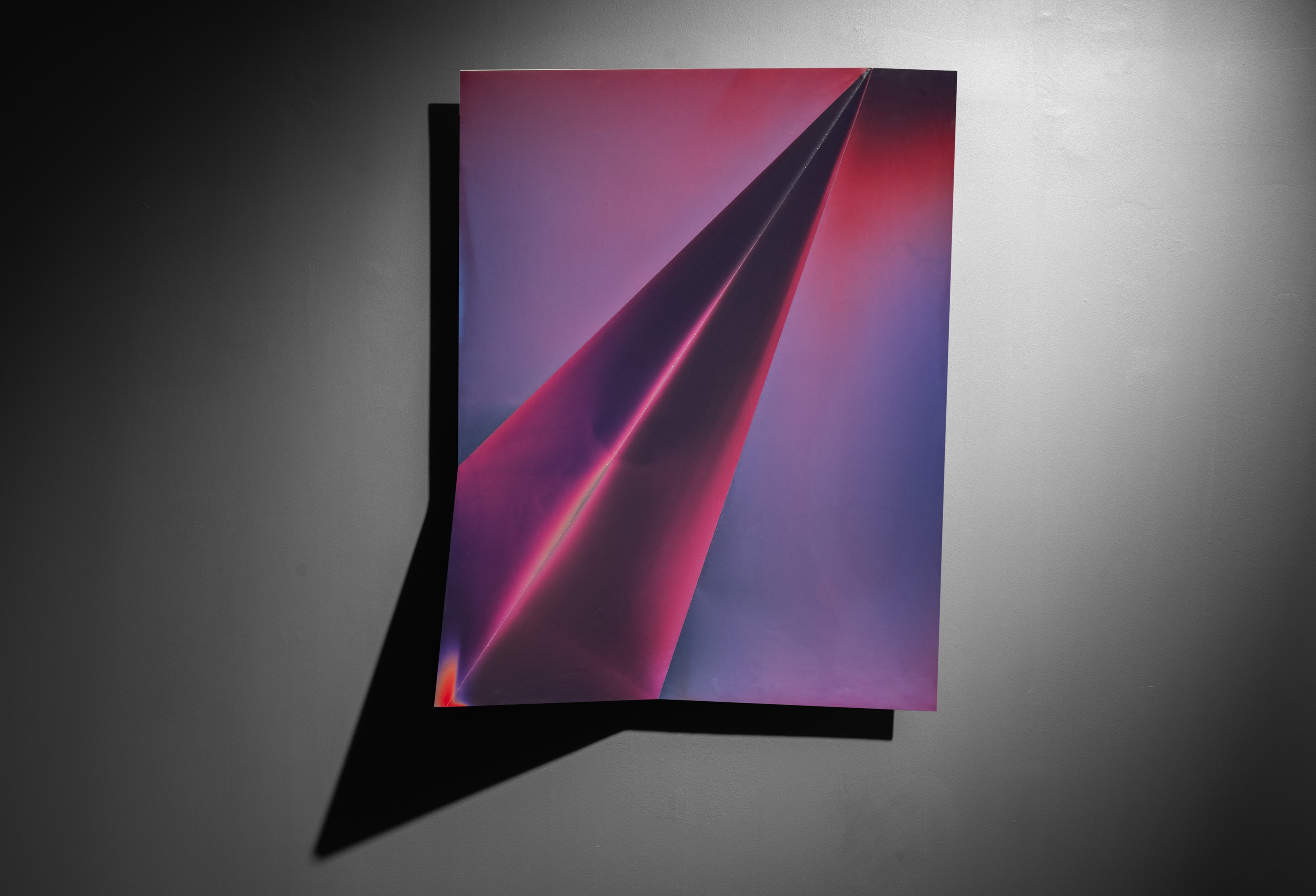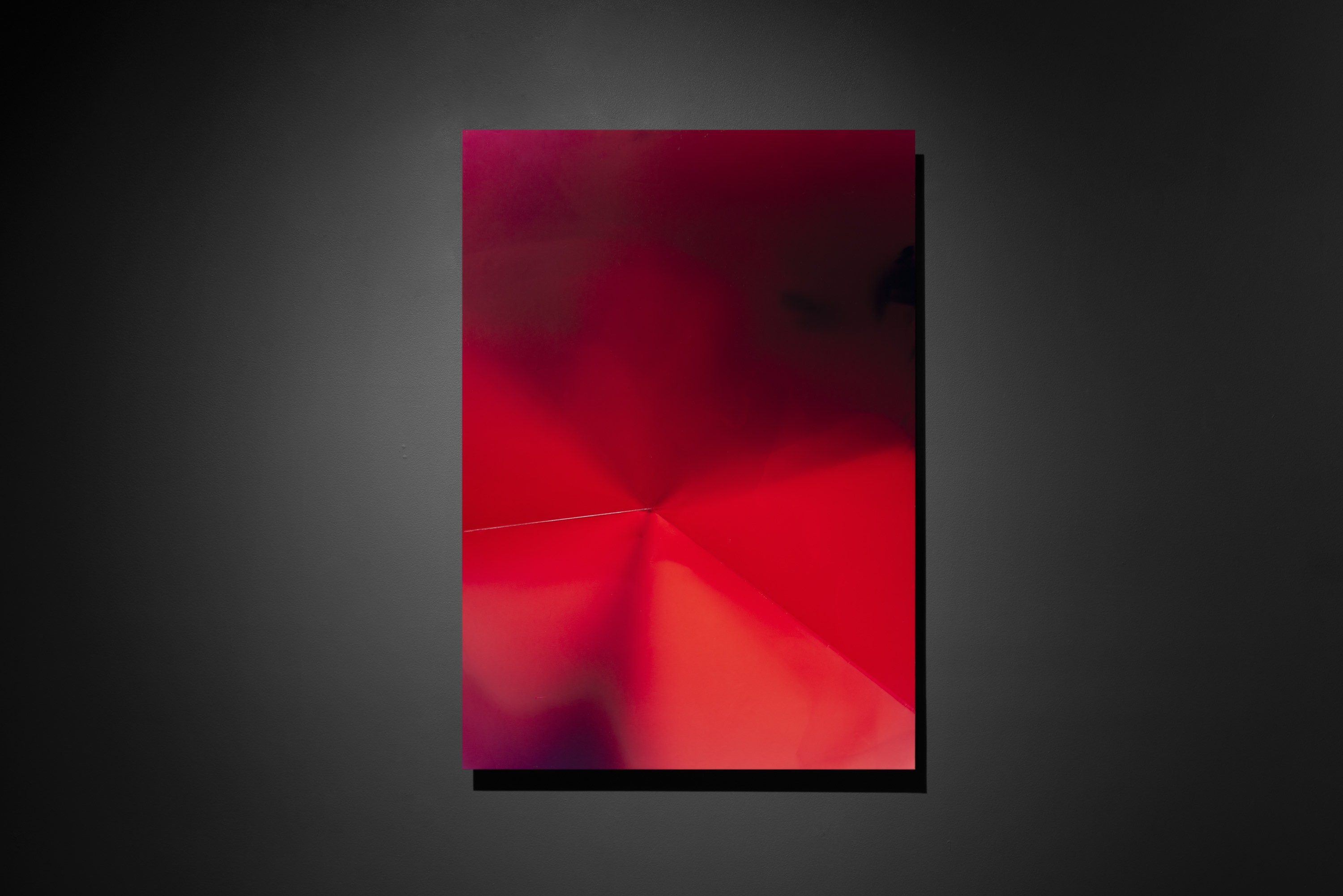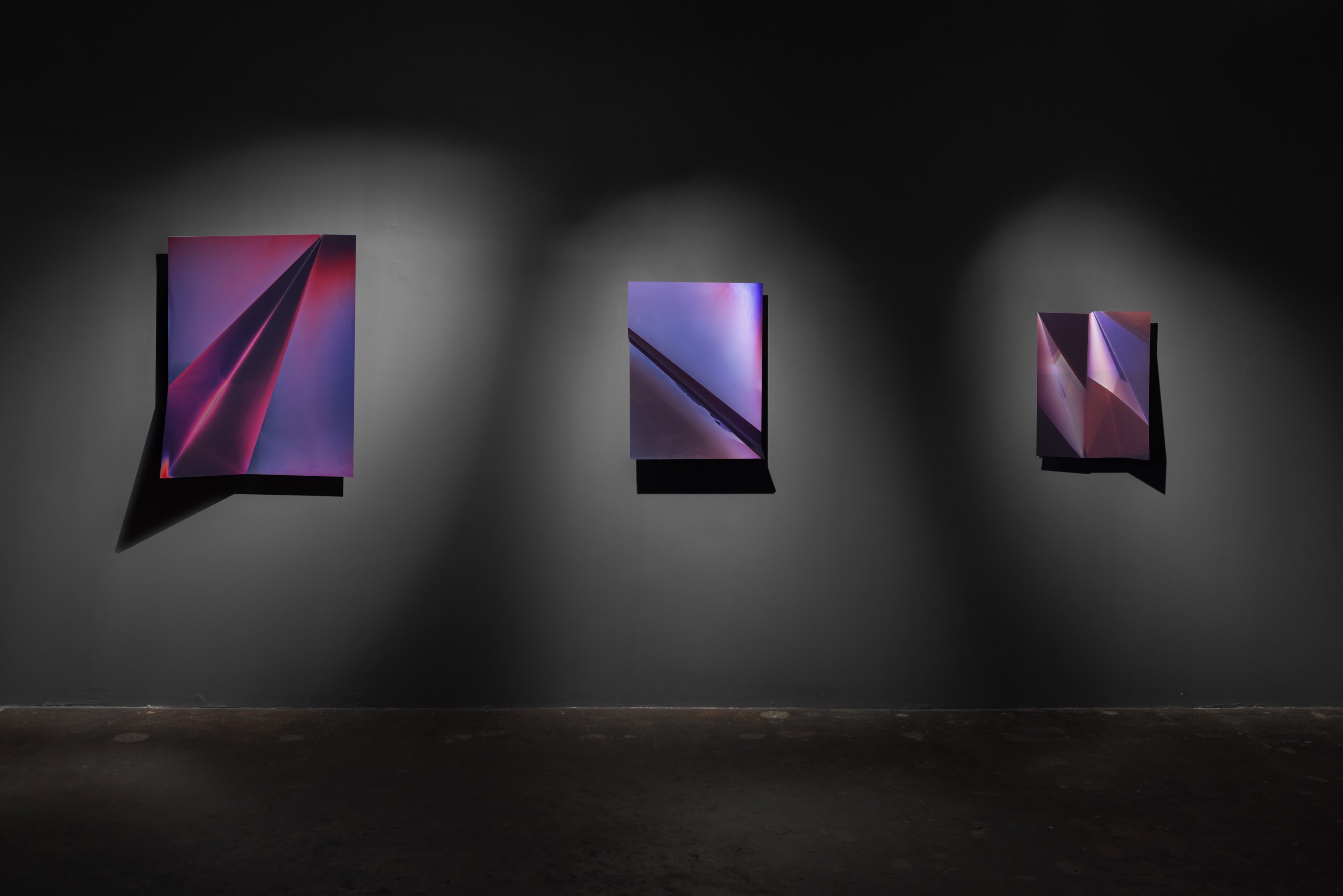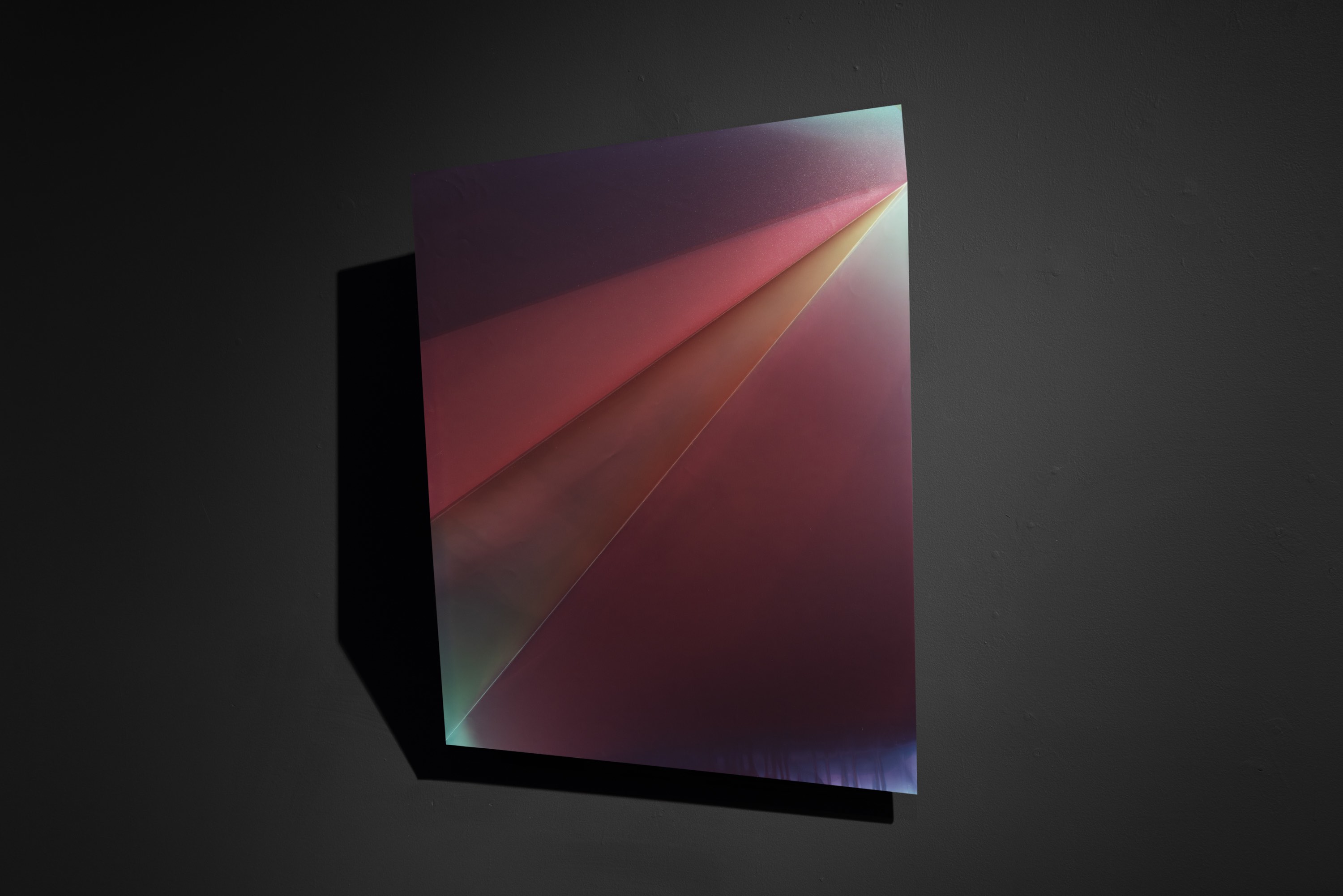
Review
Fabiola Menchelli: Folding Light
by Carolina Magis Weinberg
Reading time
4 min
The space is dark. On the walls, a sequence of lights illuminates a series of intriguing objects. From afar, it is unclear what they are, and approaching them does not reveal their nature; instead, each attempt only deepens the mystery. These are the works of artist Fabiola Menchelli in the exhibition We are not what we have seen, curated by Laura Orozco at the Angstroms space presented by Arróniz Gallery. On the walls, there is a succession of incomprehensible objects dotted with light directed from above. The spotlights draw attention to the gestures of each object, and the light falling on the vertical elements shows how they retain their intrigue even when hanging on the wall—they are both surfaces and volumes, sculptures and photos at the same time.
Being familiar with the artist's work for many years is key to unraveling the visual mystery. Menchelli's object-images show a quiet, shadowy dance occurring in a different location (the darkroom), with just remnants visible in the display area. These static pieces subtly acknowledge the fluid, physical, and tactile process that went into making them.

Imagining Fabiola Menchelli standing in the darkroom, holding the photographic paper with her whole body. Imagining her embracing the sheet, encompassing it; holding it at a precise point, not too tightly to avoid leaving any marks. Envisioning her turning into a cyclorama, turning the sheet into a background that supports, molds, and shapes the paper for the light to hit its surface. A flash of light. Then placing the paper in total darkness on a table, folding it blindly, guiding the folded surface with her hands. Keeping the gestural memory in the folds. Trying to imagine an image with the fingers that direct the paper towards its new form. Then, standing again, holding, exposing the paper to the beam of light, using colored filters. Facing randomness vertically. It is an intimate, secretive spectacle, known solely by the photograph-object as the outcome, a tacit encounter between a body that photographs and a surface influenced by controlled, orchestrated light and its conical rays.

Back in the exhibition space, the dance has dissipated, materializing into patches of light. Above, in a more intimate and less dark area, there is a brief additional section to the exhibition. Three little items are on a table there. In this instance, they are resting on the table instead of hanging on the wall, like three books being read simultaneously or three items that are always in conversation with one another. Here something has changed; the body is much more plainly seen, even if it remains completely abstract. These are tiny black and white pictures that have been folded from a central line in a balanced way, like the shape of a book. These object-images feel embraced, contained, scaled to the hands that hold them. They are proportional to the body like a pocket-sized book: fitting in a suitcase, ready to travel. And there, at the nodal points where the paper was held in the darkroom, the body appears from the corners of the paper; in the interplay of light and shadow, one may see the presence of someone who is clearly there but is no longer present.

Menchelli's work lies between the accumulated instant of photography and the continuous temporality of sculpture. To build these object-images, the artist had to seek the specialized work of a metal-folding factory; it is evident that all these photographs that spot the wall are mounted on metal plates. It is the combination of paper and metal plate that allows the images to be held. These instinctive, choreographed folds, only possible in the intimate bodily condition of the darkroom, translate into machined, solid, rigid, and structured creases. It is crucial to dwell on this interaction; the encounter where chance defines a paper-form and reason constructs the metallic support enabling the folds to gain more volume.

Menchelli explores–not only in this series but throughout her work–how the fold is the form that shows the meeting point between image and body. She also pushes the boundaries of photography, considering the potential materiality of the image, imagining the dimension of its ultra-light volume, and the immutable possibility of solidity hidden in a minimally folded metal support. In these encounters, the artist questions the possibility of taking photos without a camera, and goes even further, posing a couple of mythical, almost paradoxical questions: Can the body be shown without the body? How can time continue to be as soft as paper and as hard as metal in the future?
Translated to English by Luis Sokol
Published on March 2 2024